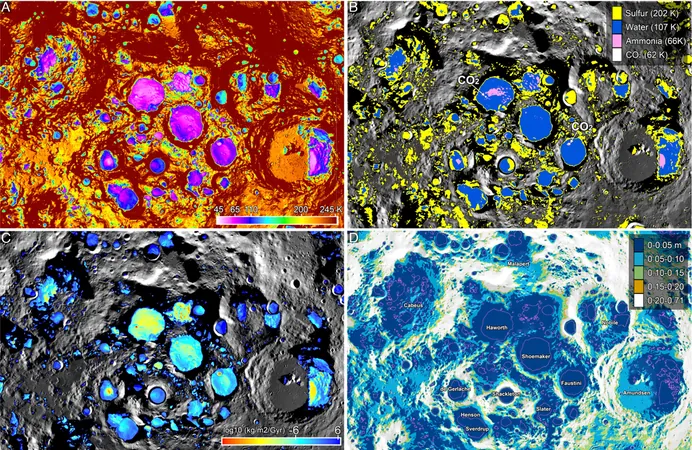
Luspatercept Emerges as a Game-Changer for Anemia in MDS Patients
2024-12-18
Author: Ming
Exciting news from the realm of hematology: recent findings from a phase 2 trial highlight the potential of luspatercept as an effective treatment for anemia in non-transfusion-dependent (NTD) patients suffering from lower-risk myelodysplastic syndromes (LR-MDS). The study, published in the International Journal of Hematology, involved 21 patients predominantly aged 65 and over, all grappling with symptomatic anemia and hemoglobin levels dropping below 10.0 g/dL.
Groundbreaking Results!
Participants in the trial showed statistically significant and clinically meaningful improvements in hemoglobin levels, effectively delaying the need for blood transfusions. At the 24-week mark, nearly 48% of patients achieved a hematological improvement-erythroid response, a figure that dramatically exceeded the anticipated threshold of 10%. By the end of 48 weeks, this response rate climbed to 57.1%, with an impressive 81% of patients maintaining transfusion independence throughout the treatment period.
Who Benefits Most?
The results were particularly encouraging among patients with specific genetic markers. Those carrying the SF3B1 mutation or presenting with ring sideroblasts exhibited response rates of 70% and 69%, respectively. Such outcomes suggest a tailored approach may greatly enhance treatment efficacy, especially for those who have not responded well to traditional erythropoiesis-stimulating agents (ESAs).
The Mechanism Behind the Magic
Luspatercept functions as an erythroid maturation agent that promotes the proliferation and differentiation of late-stage erythroblasts, thereby supporting increased red blood cell production. Most notably, the study illustrated that the median duration of hematological improvement was a remarkable 35.4 weeks, emphasizing luspatercept's persistent impact.
Safety and Conditions of Use
The safety profile of luspatercept remained consistent with prior research, indicating that 33.3% of patients experienced treatment-emergent adverse events (TEAEs), mostly mild to moderate. No severe adverse events were reported, and crucially, no patients progressed to acute myeloid leukemia during the study, raising hopes regarding the long-term safety of luspatercept.
Luspatercept is administered subcutaneously, with an initial dosage of 1.0 mg/kg every three weeks, and allows increases up to 1.75 mg/kg to maintain hemoglobin levels between 10 to 12 g/dL.
Why It Matters Now More Than Ever
With limited treatments available for NTD patients suffering from LR-MDS, the ability of luspatercept to delay or prevent transfusion dependence could lead to enhanced quality of life and better long-term outcomes. Transfusion dependence is often linked to increased risks, including iron overload and reduced overall survival rates.
As healthcare professionals emphasize, initiating luspatercept early in disease progression could be crucial for optimal patient outcomes, particularly for those resistant to traditional ESAs.
What's Next?
While the initial findings are compelling, the small sample size and the single-arm design of the study suggest that further research is needed for broader applicability. Ongoing trials, such as the ELEMENT study, are expected to shed additional light on the comparative effectiveness of luspatercept against conventional treatments.
In summary, these groundbreaking results signal a hopeful future for NTD patients with LR-MDS, ushering in a new era of tailored therapies aimed at addressing one of the most challenging aspects of managing anemia in these individuals. Is luspatercept the key to revolutionizing treatment for MDS-related anemia? Only time will tell!




 Brasil (PT)
Brasil (PT)
 Canada (EN)
Canada (EN)
 Chile (ES)
Chile (ES)
 España (ES)
España (ES)
 France (FR)
France (FR)
 Hong Kong (EN)
Hong Kong (EN)
 Italia (IT)
Italia (IT)
 日本 (JA)
日本 (JA)
 Magyarország (HU)
Magyarország (HU)
 Norge (NO)
Norge (NO)
 Polska (PL)
Polska (PL)
 Schweiz (DE)
Schweiz (DE)
 Singapore (EN)
Singapore (EN)
 Sverige (SV)
Sverige (SV)
 Suomi (FI)
Suomi (FI)
 Türkiye (TR)
Türkiye (TR)